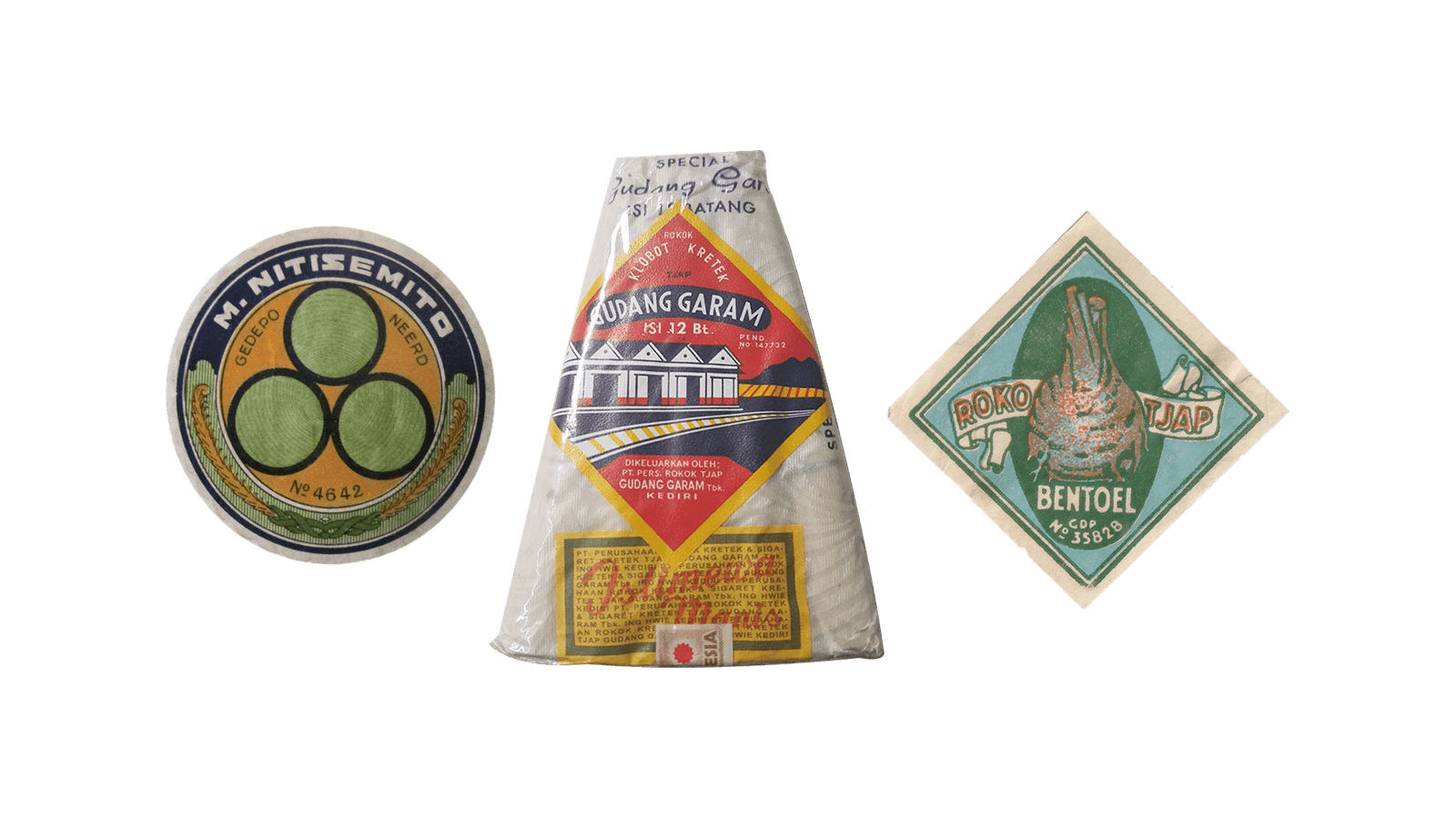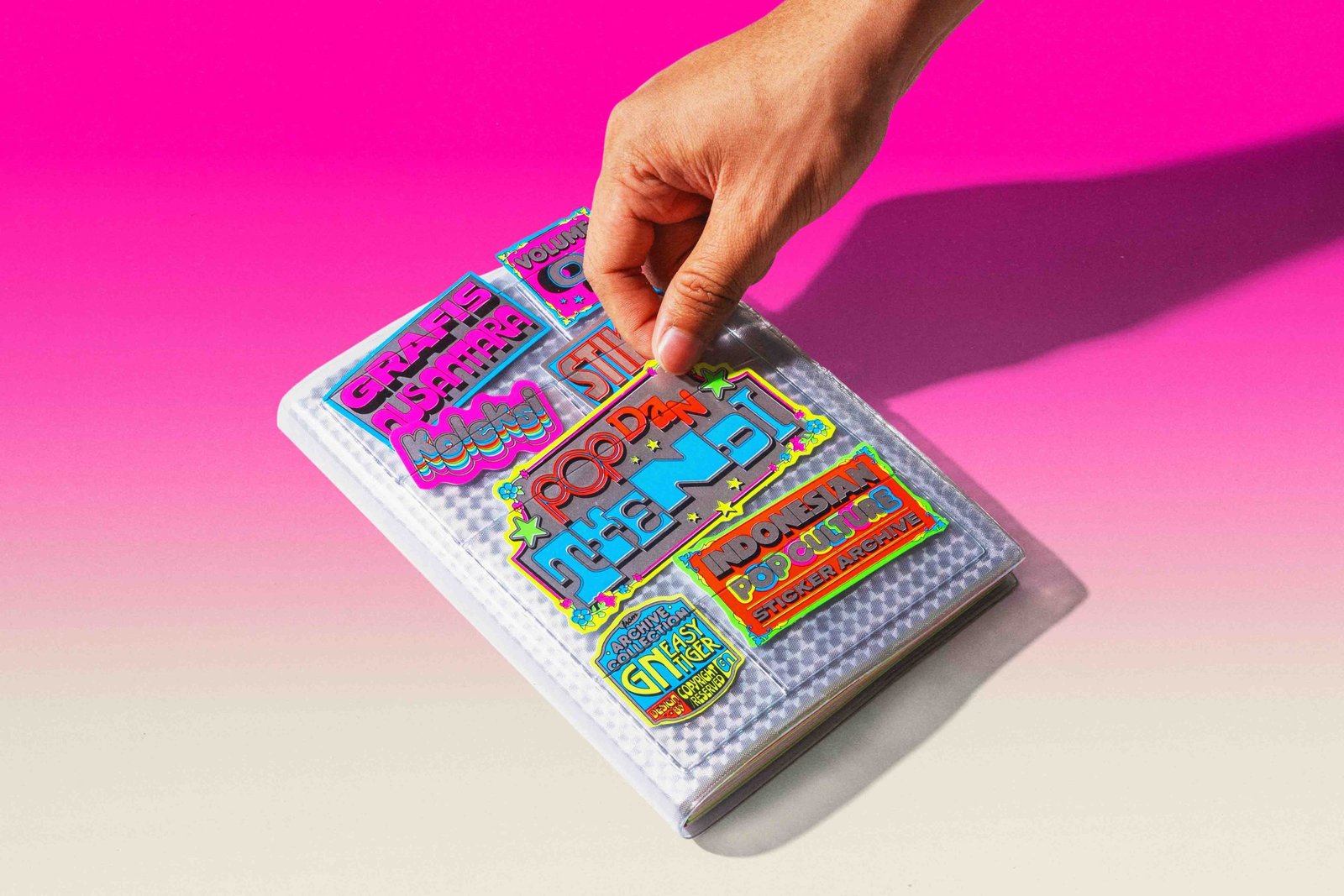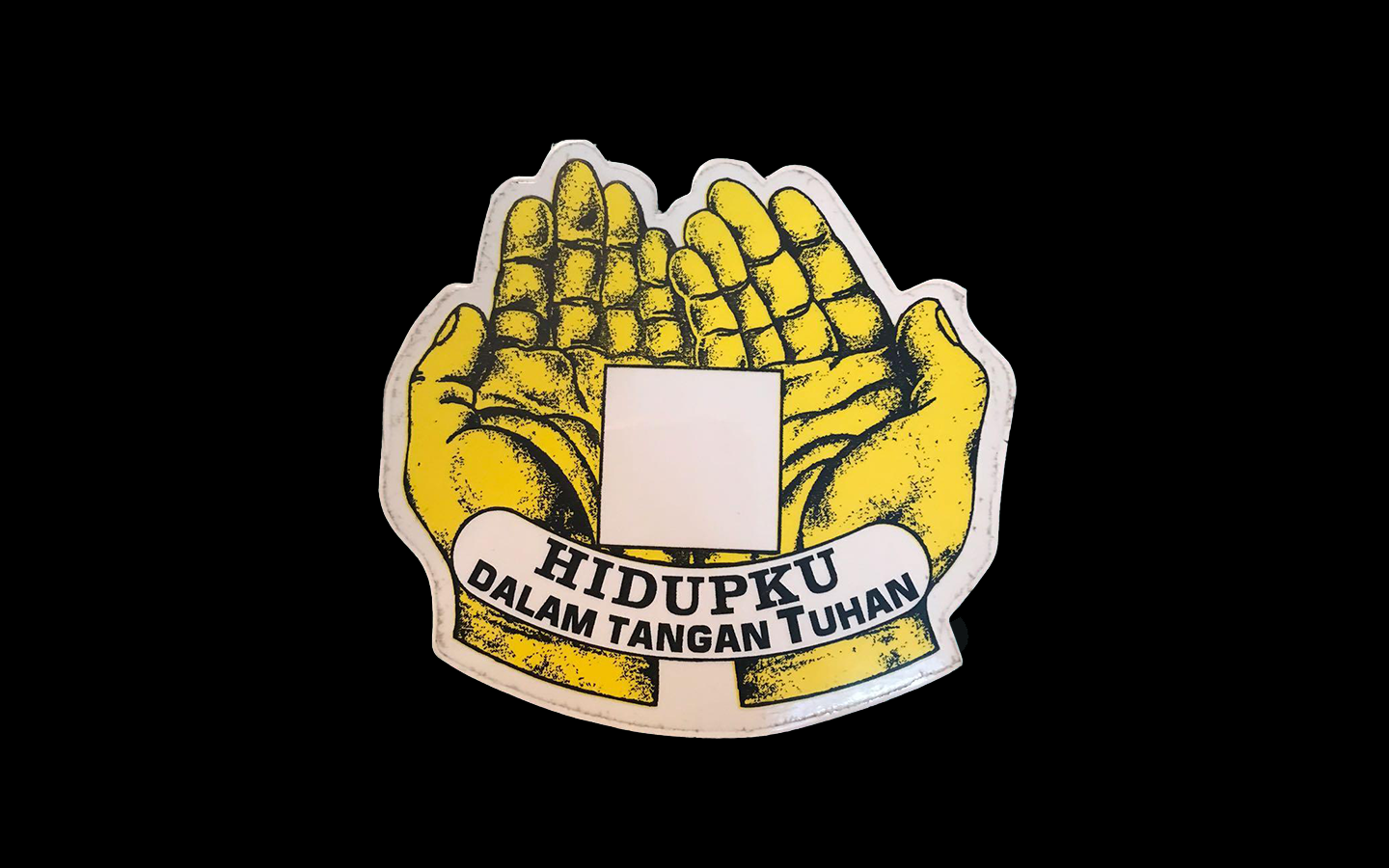It all started after our talk at the Hardcore Art Book Fair. I had just finished presenting Grafis Nusantara and thought we’d get a few polite smiles and nods. Instead, people from Mexico and all over Latin America approached us, saying how much Indonesia felt familiar to them. They talked about the hand-painted signs outside their local shops, reminding me of the ones still scattered around Glodok Chinatown in Jakarta. Some even pointed out how the Qur’anic decals I always see in Jakarta felt so similar to the Nuestra Señora de Guadalupe stickers on the Ubers I rode in Mexico City.
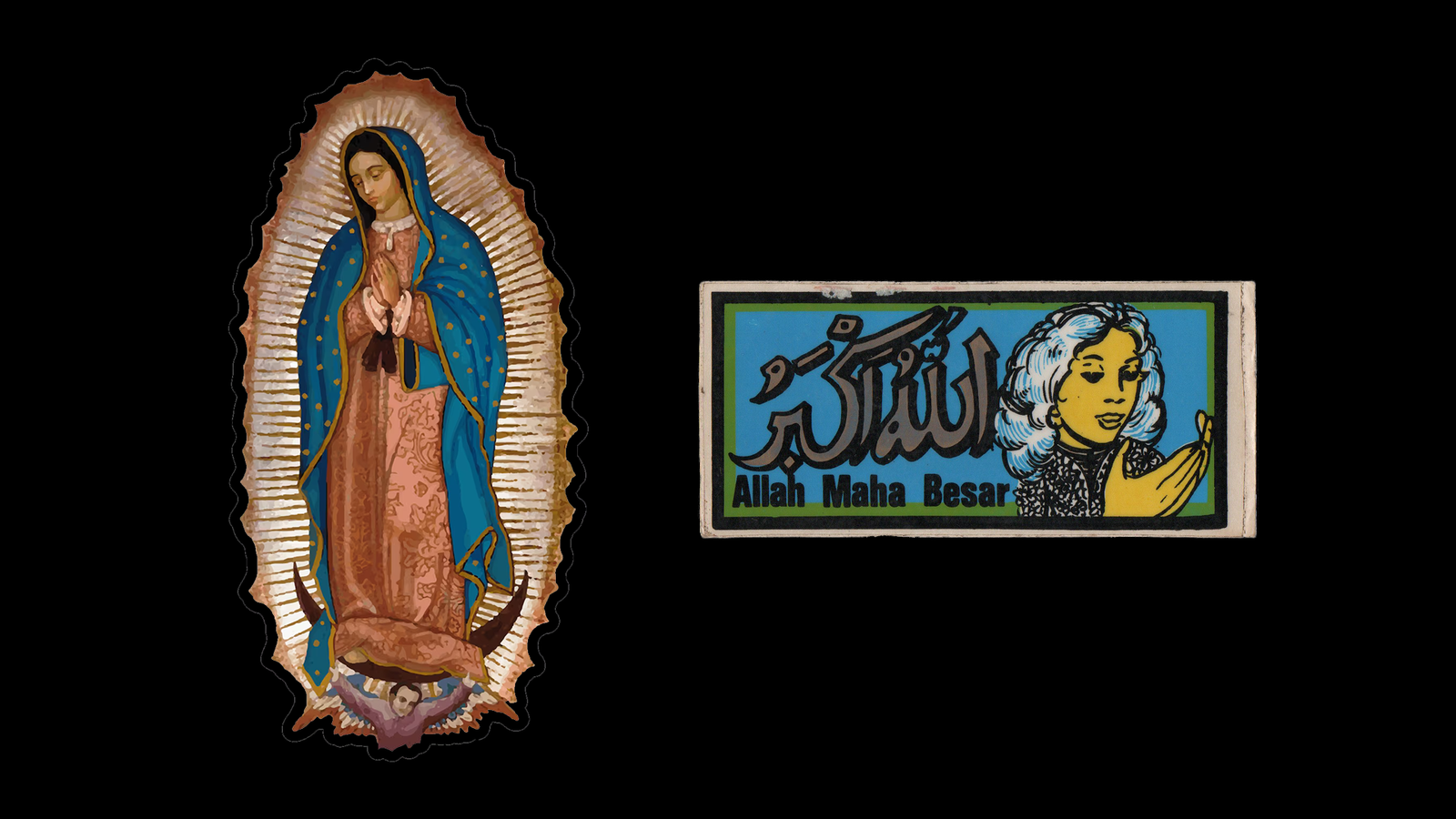
Left: Sticker of Nuestra Señora de Guadalupe. Right: Sticker of a praying woman with Arabic text reading Allahu Akbar (“Allah is the Greatest”) alongside its Indonesian translation. Collection of Grafis Nusantara..
That sense of familiarity wasn’t just about design. Mexico and Indonesia share a long history of living under European powers — Mexico under Spain, Indonesia under the Dutch. Those colonial years didn’t just change governments and economies; they also reshaped how people expressed their culture and spirituality. Instead of clinging to scattered bits of the past, both places found ways to mix what was brought in with what was already there, turning it into something new and alive. In Mexico, that blending became part of the national story through mestizaje, a celebrated mix of Indigenous and European roots. In Indonesia, it happened more quietly, outside official narratives, but you can still see it everywhere in the way traditions and daily life evolved.
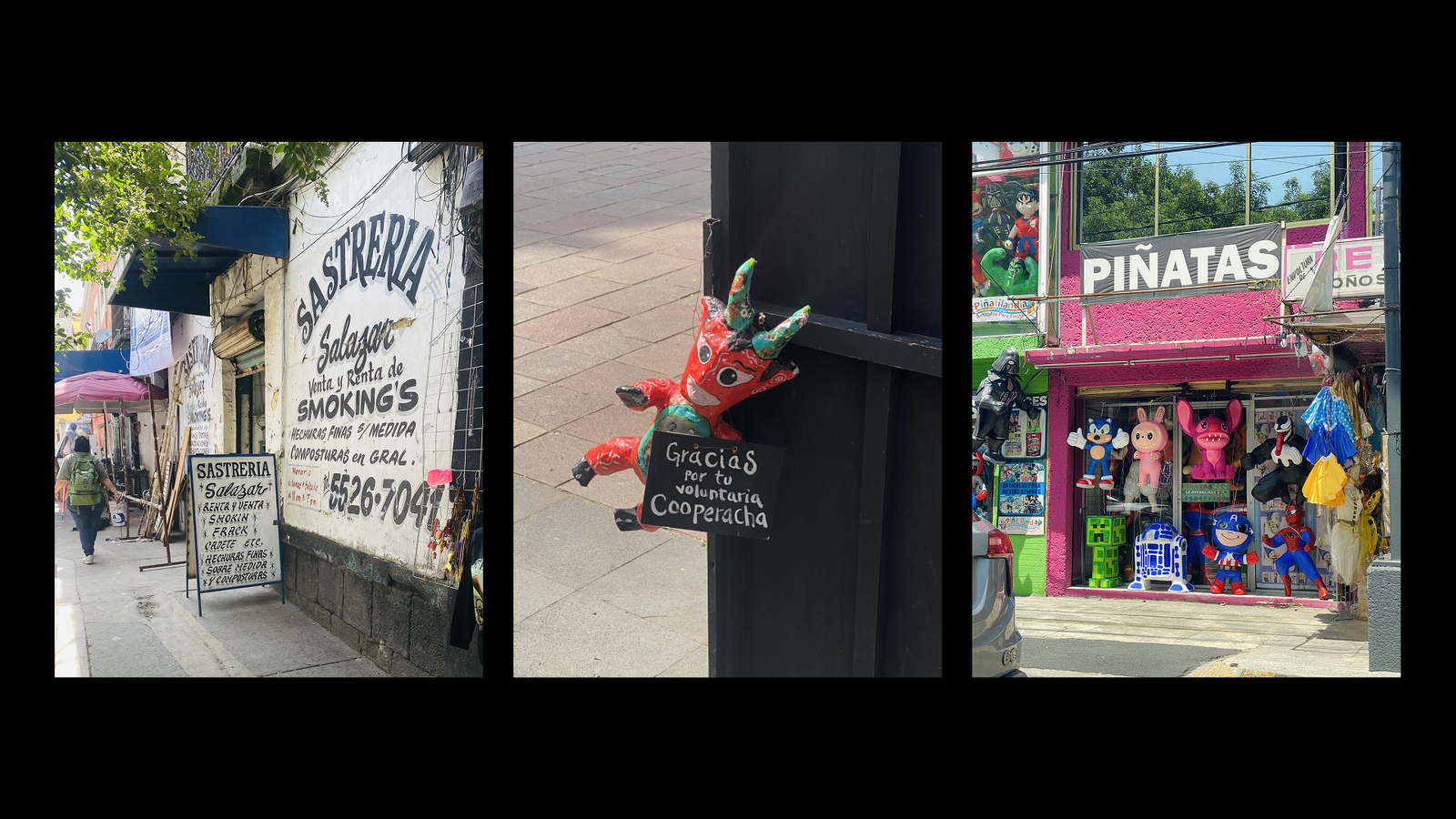
From the streets of Mexico City: a hand-painted tailor shop sign, a cheeky devil figure asking for tips, and a vibrant piñata shop bursting with colour and pop culture icons. Everyday visuals like these capture the energy and character of the city’s vernacular design.
You can still feel that history on the streets. In both Mexico and Indonesia, vernacular design is everywhere: hand-painted food stall signs, colourful boards outside repair shops, religious stickers on windows, even the art on the backs of trucks. These aren’t just decorations. They show how people live, what they believe in, and how they find humour and resilience in everyday life. It’s a good reminder that design doesn’t always come from studios or agencies. A lot of it starts with regular people and a paintbrush, shaping the streets in their own way.
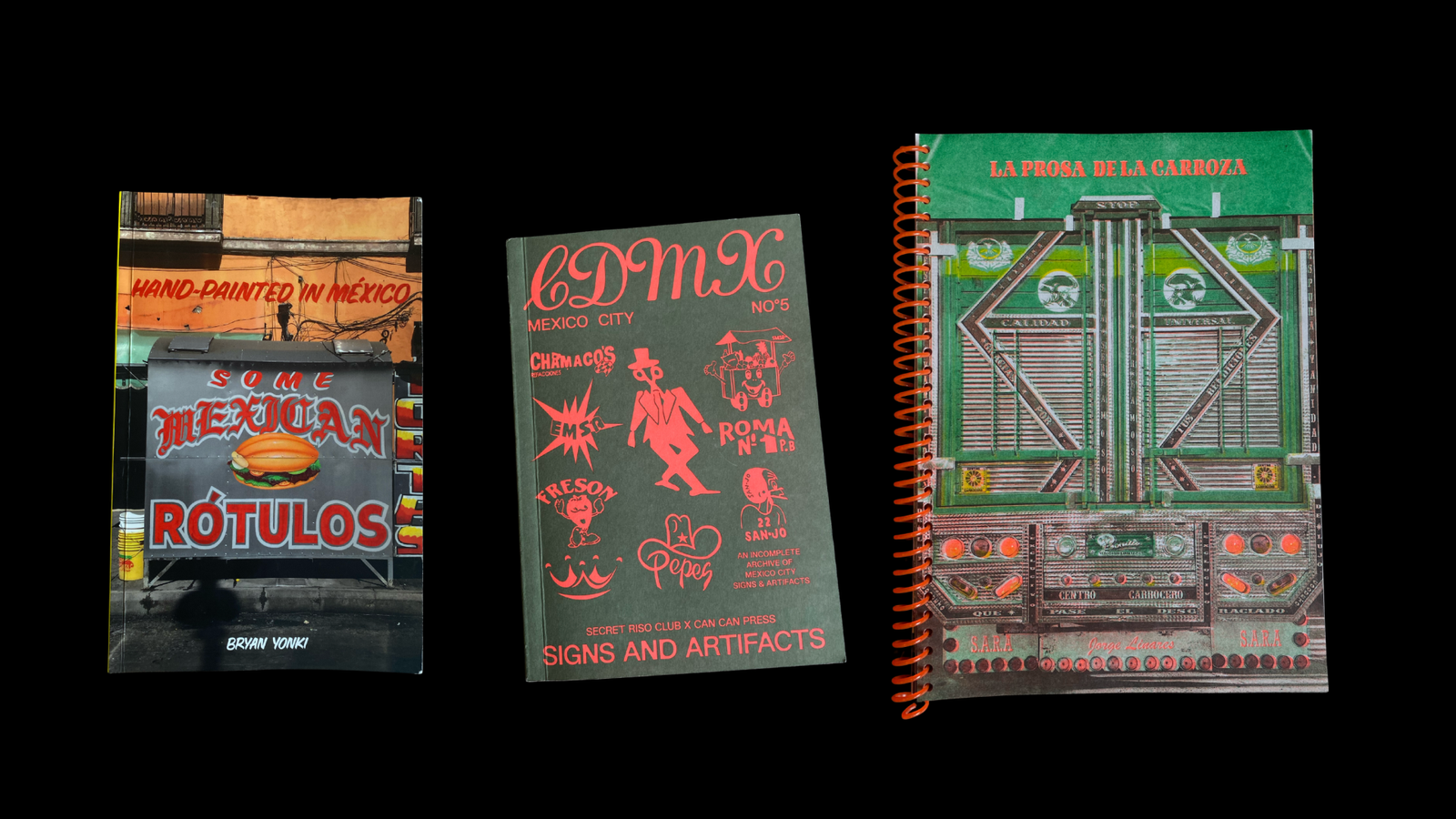
(Left to right): Hand-Painted in Mexico by Bryan Yonki (Hechiza); An Incomplete Archive of Mexico City Signs and Artifacts, a collaboration between Secret Riso Club and Can Can Press with contributions by Gabino Azuela; and La Prosa de la Carroza by Jorge Linares (S.A.R.A).
Some of the books I brought home from the Hardcore Art Book Fair capture this energy perfectly. Hand-Painted in Mexico by Bryan Yonki, published by Hechiza, is packed with photos of hand-painted signs from Mexico City, Oaxaca, and Sonora. In the intro, Miguel Escamilla talks about the idea of México Mágico (Magical Mexico), where everything is celebrated — the colourful, the ornate, the folk, the simple, even the over-the-top. It’s the opposite of the clean, minimal look you see everywhere in international design. Mexico leans into a “more is more” vibe, but still somehow ticks all the boxes of good design.
Another favourite is An Incomplete Archive of Mexico City Signs and Artifacts, a collaboration between Secret Riso Club and Can Can Press. Gabino Azuela writes about how every sign is more than just a label. It carries traces of the work that went into it, a promise to the people passing by, and a little hope that it will stick around in a city that’s always changing.
And then there’s La Prosa de la Carroza by Jorge Linares, published by S.A.R.A. It’s a poetry book inspired by the phrases painted on the backs of trucks. The cover even looks like the rear of a truck, covered in stickers and slogans. The second I saw it, I felt a spark. Truck art in Mexico is a whole visual culture, just like the painted buses and trucks that crisscross Indonesia.
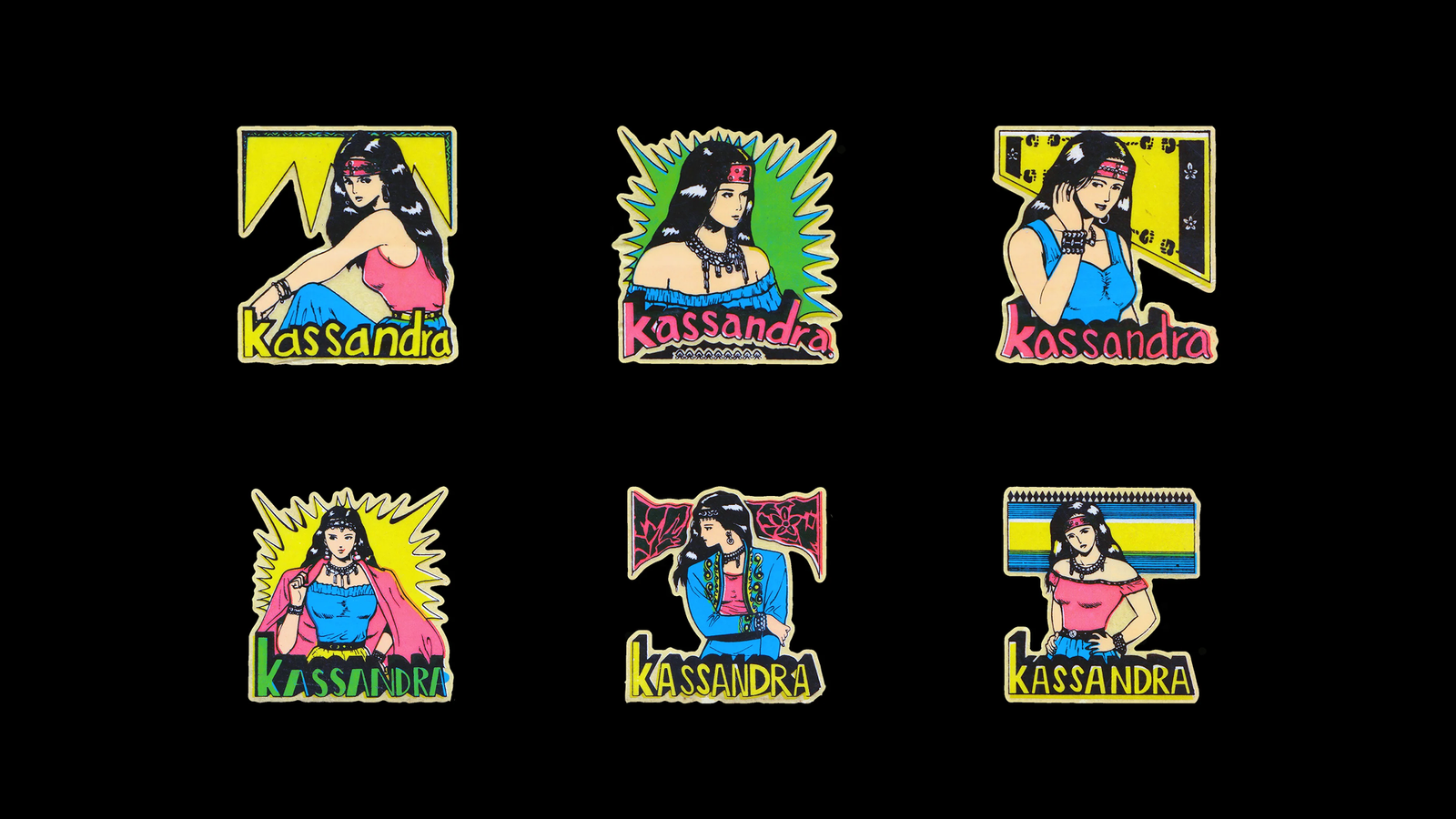
A set of six stickers featuring the titular character from the Venezuelan telenovela Kassandra, which reached Indonesian audiences in the 1990s and became part of the country’s pop culture sticker scene. Collection of Grafis Nusantara.
Popular culture has also built some unexpected bridges between Mexico and Indonesia. Back in the 1990s and 2000s, Mexican and Latin American telenovelas like María Mercedes and Marimar were everywhere on Indonesian TV. For a lot of Indonesians, those shows were the first time we’d ever seen Spanish-speaking cultures on screen. Sure, they were over-the-top and full of melodrama, but they left a mark, shaping how many of us imagined Latin America, from family bonds to beauty and hardship.
When I think about Mexico and Indonesia side by side, it’s not about them being alike. What stands out is how both have learned to adapt through centuries of change, blending what’s local and foreign, sacred and secular, old and new. Spending time in Mexico, even just briefly, made that connection feel real. Both places carry this sense of making something new out of contradiction.
Being there wasn’t just research or casual observation. From street corners to markets, I could feel the energy of a place that’s constantly reinventing itself. And then at the Hardcore Art Book Fair, the enthusiasm for Grafis Nusantara caught us off guard in the best way possible. We sold out completely. More than anything, though, I left feeling grateful for the warmth, the conversations, and the way Mexico welcomed us so openly.
Thank you, Mexico, for your energy and generosity. Hopefully, we’ll be back soon with more books, more stories, and more chances to keep building these connections.
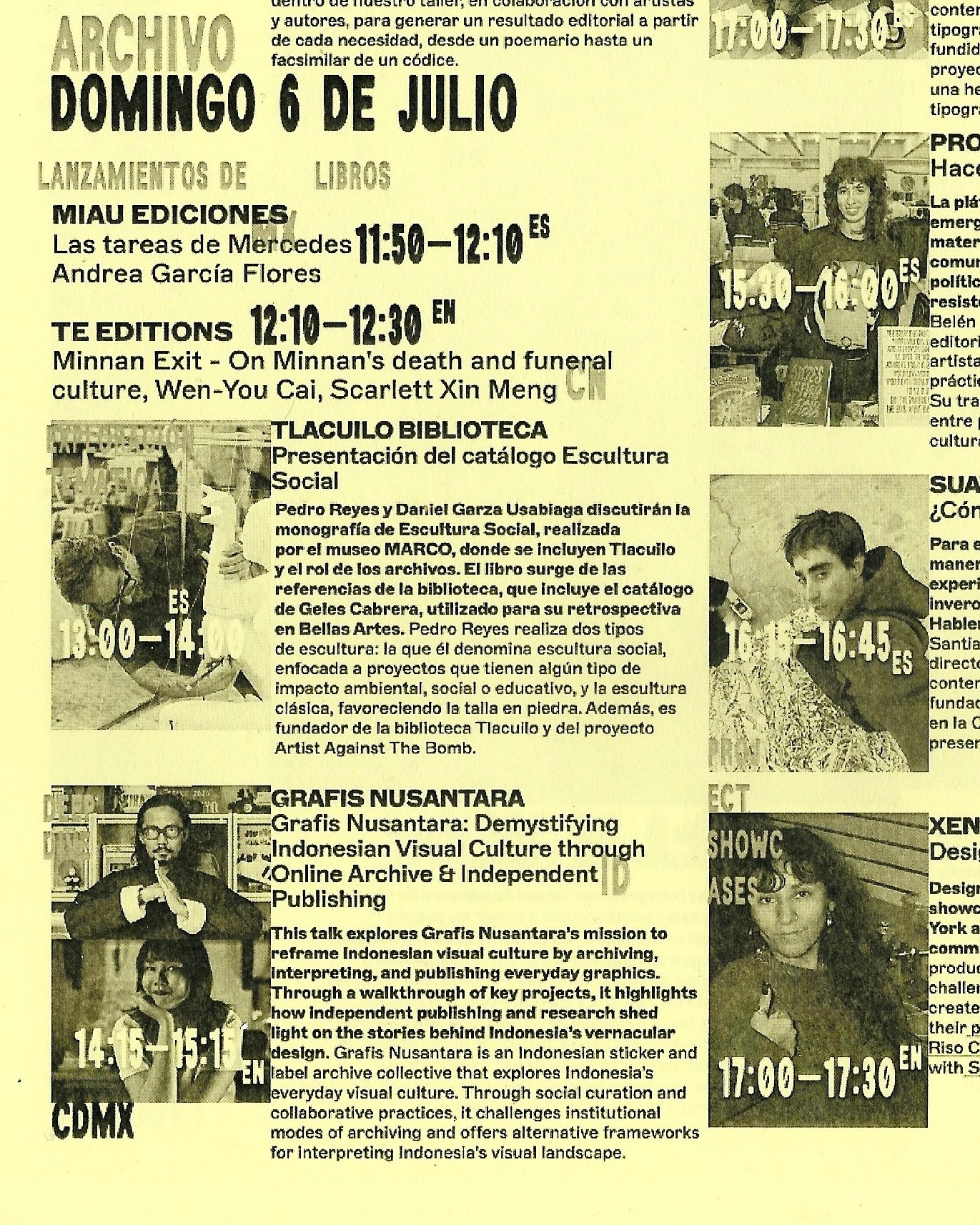
Brochure for our talk, presented alongside other incredible speakers. Published by Zamme Projects and Hardcore Art Book Fair, 2025.
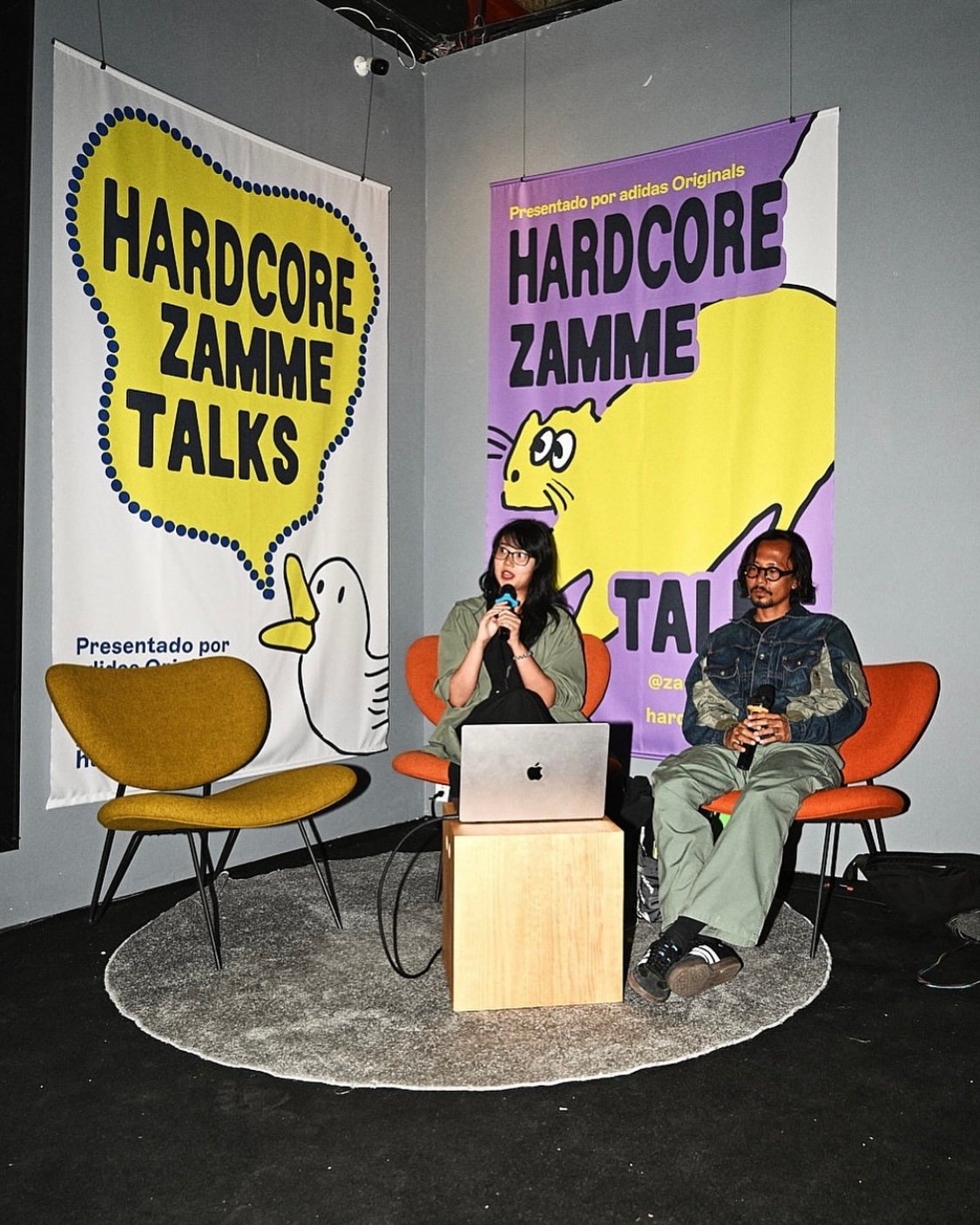
Documentation of our talk, captured by Zamme Projects and Hardcore Art Book Fair, 2025.
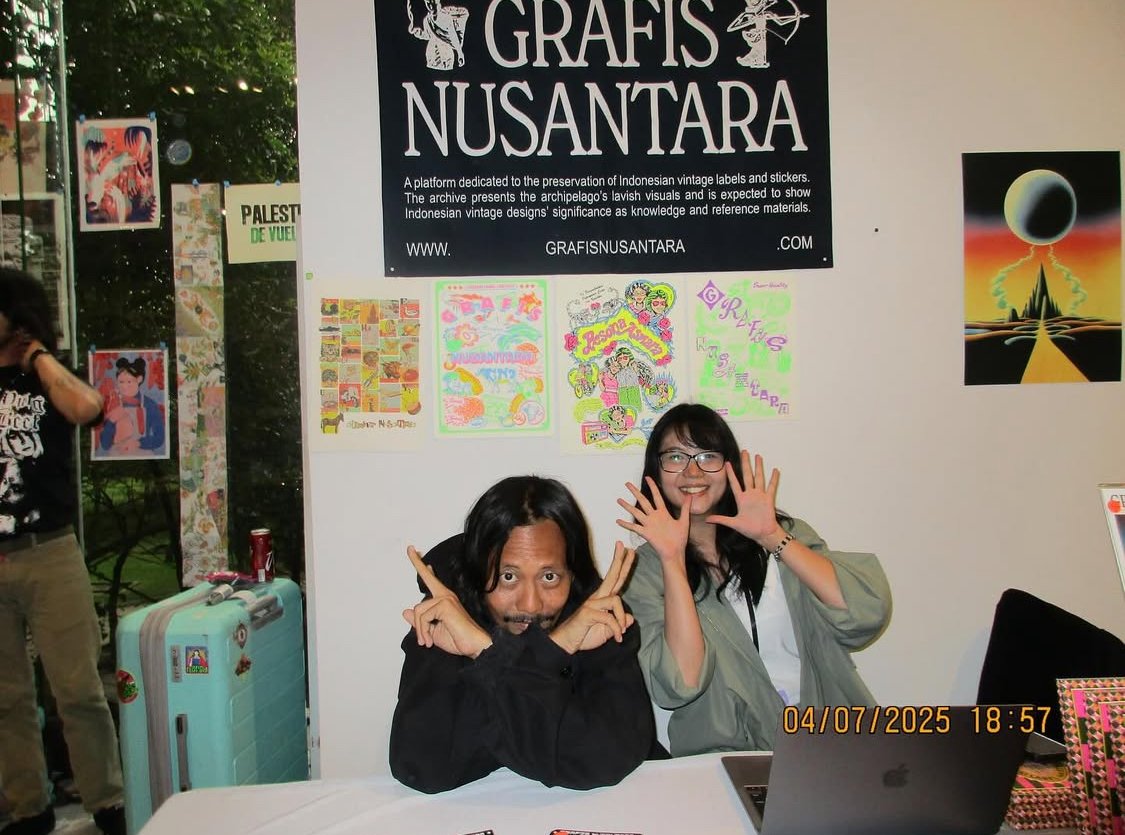
Our table at Hardcore Art Book Fair 2025. Photo by Andrea from Miau Ediciones, 2025.
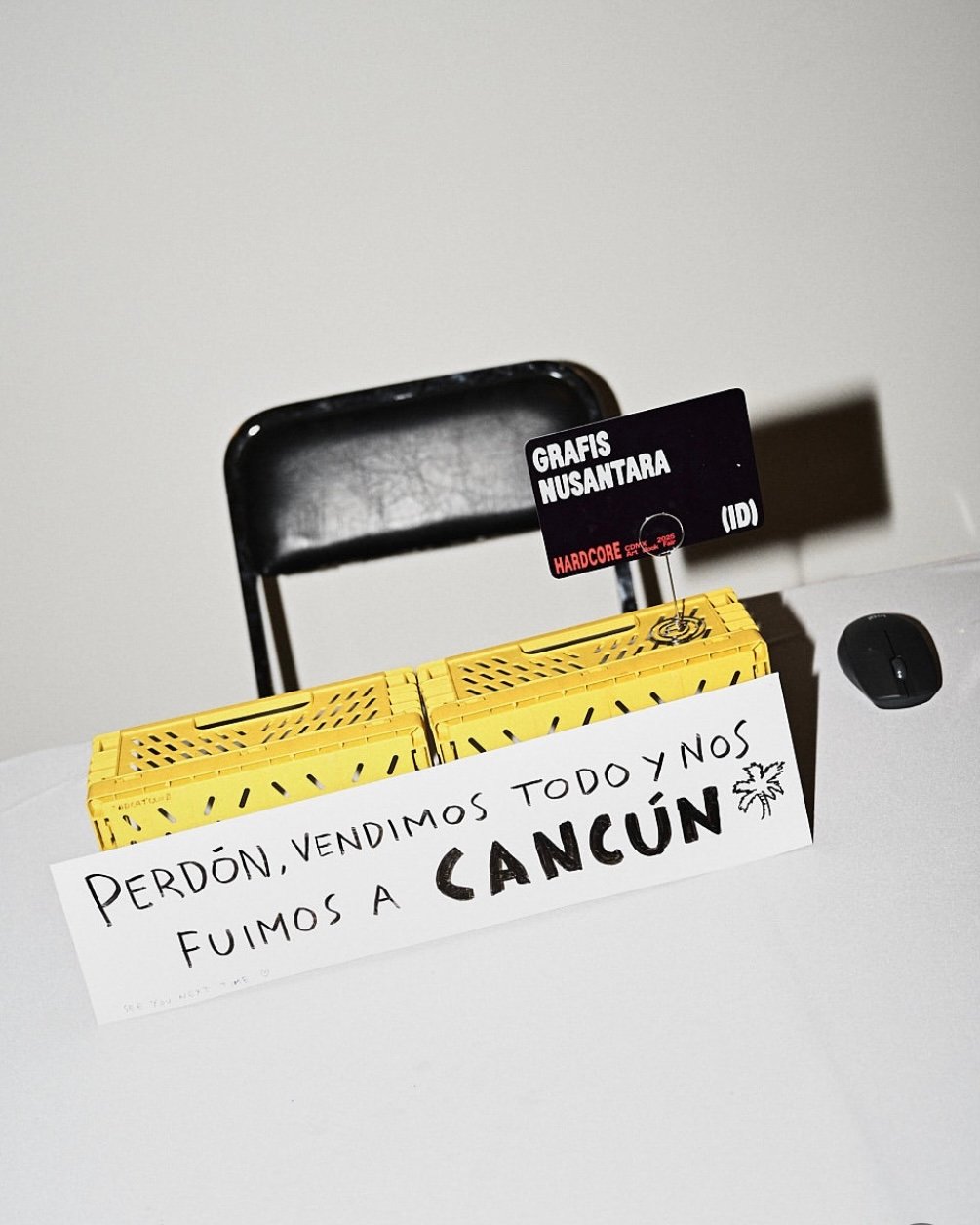
A little placeholder for our table when we had nothing left to display. Thank you, Mexico City! Photo by Hardcore Art Book Fair 2025.
